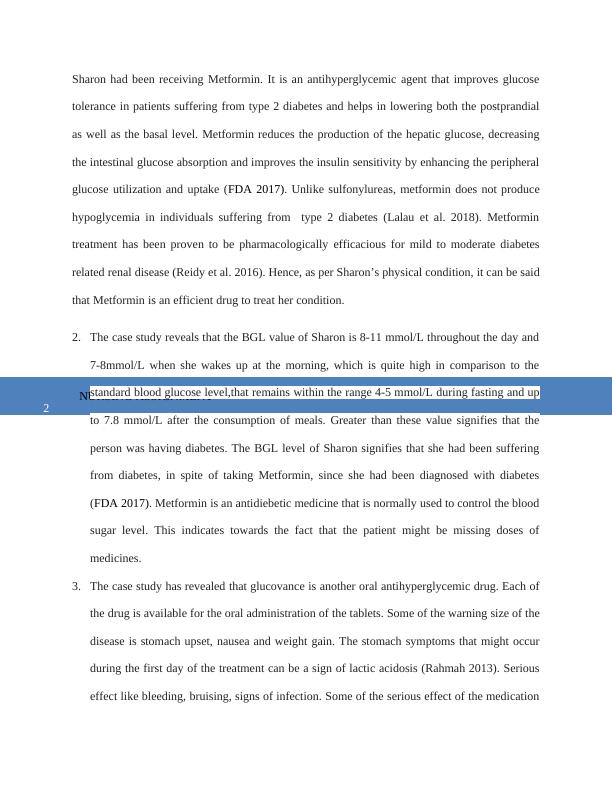Diabetes and Kidney Failure: Pathophysiology and Treatment
Integrate and apply knowledge of pathophysiology and safe medication administration to a patient scenario involving a 58-year-old female with type 2 diabetes.
8 Pages2127 Words484 Views
Added on 2022-12-08
About This Document
This assignment discusses the pathophysiology of kidney failure in diabetes and explores the treatment options available. It examines the role of medications like Metformin and Glucovance and discusses new drugs that can be used. The assignment also highlights the importance of evidence-based research for nurses and suggests nursing interventions for managing diabetes and renal health.
Diabetes and Kidney Failure: Pathophysiology and Treatment
Integrate and apply knowledge of pathophysiology and safe medication administration to a patient scenario involving a 58-year-old female with type 2 diabetes.
Added on 2022-12-08
ShareRelated Documents
End of preview
Want to access all the pages? Upload your documents or become a member.
A Case Study on Sharon Diabetes and Chronic Kidney Disease Interrelation
|10
|2286
|238
Diabetes and Chronic Kidney Disease
|9
|2320
|75
Diabetes and Chronic Kidney Disease: Case Study
|7
|1970
|496
Wtitten project - concept map
|1
|315
|84
Interpretation of the relation between Sharon’s diabetes and chronic kidney disease
|8
|2468
|99
Managing Type 2 Diabetes and Kidney Failure
|5
|2059
|70



